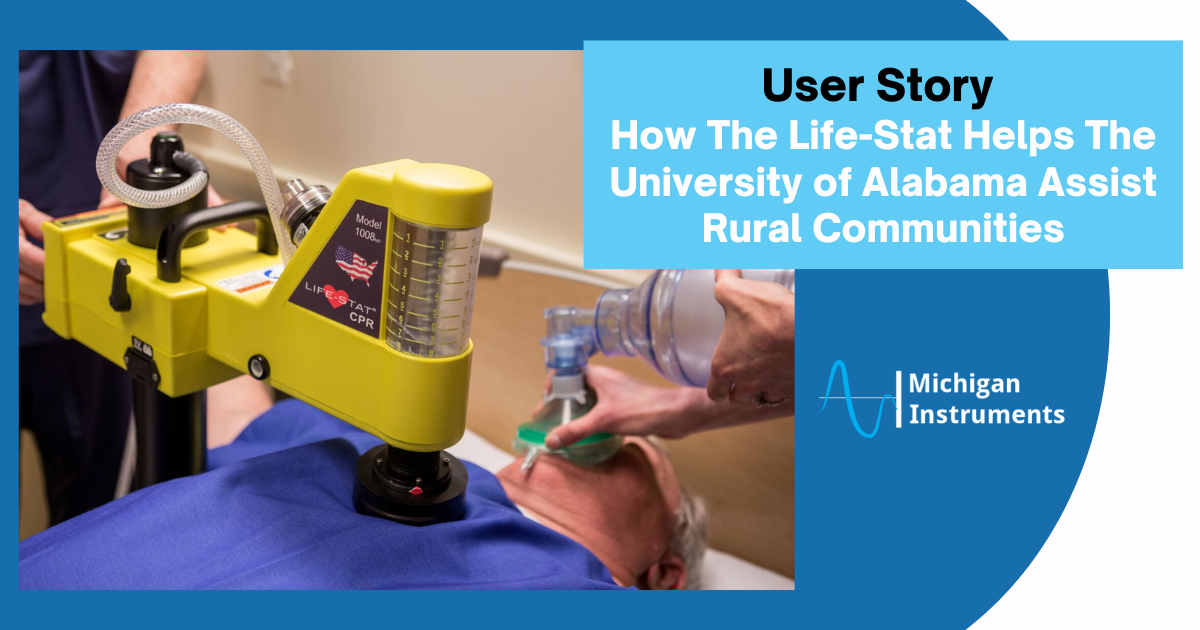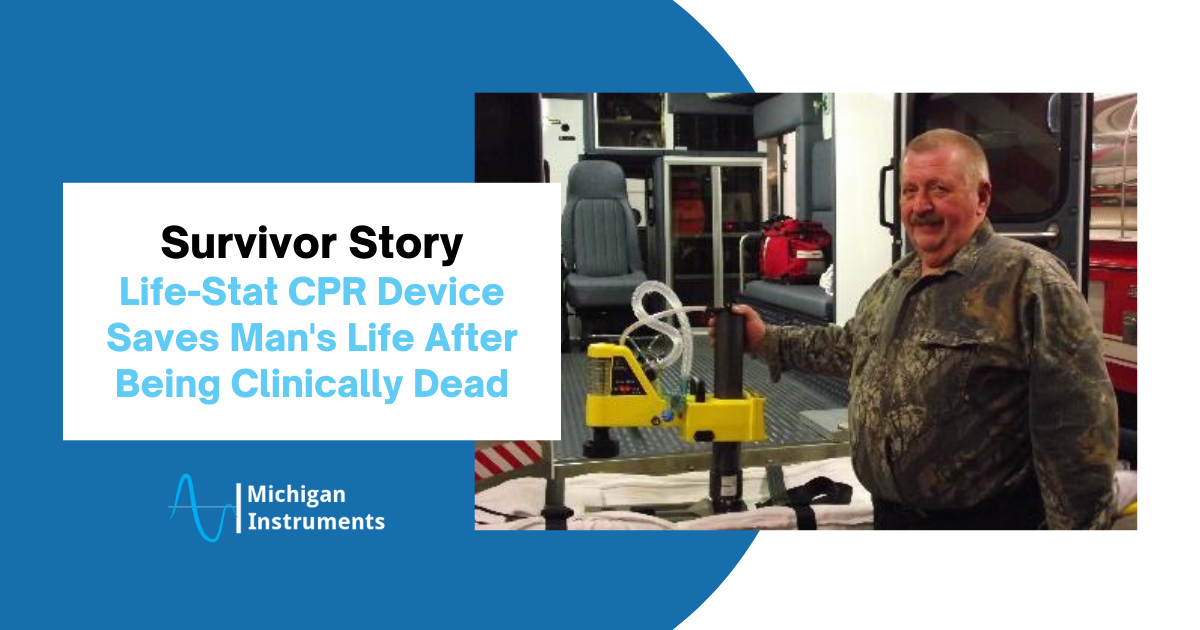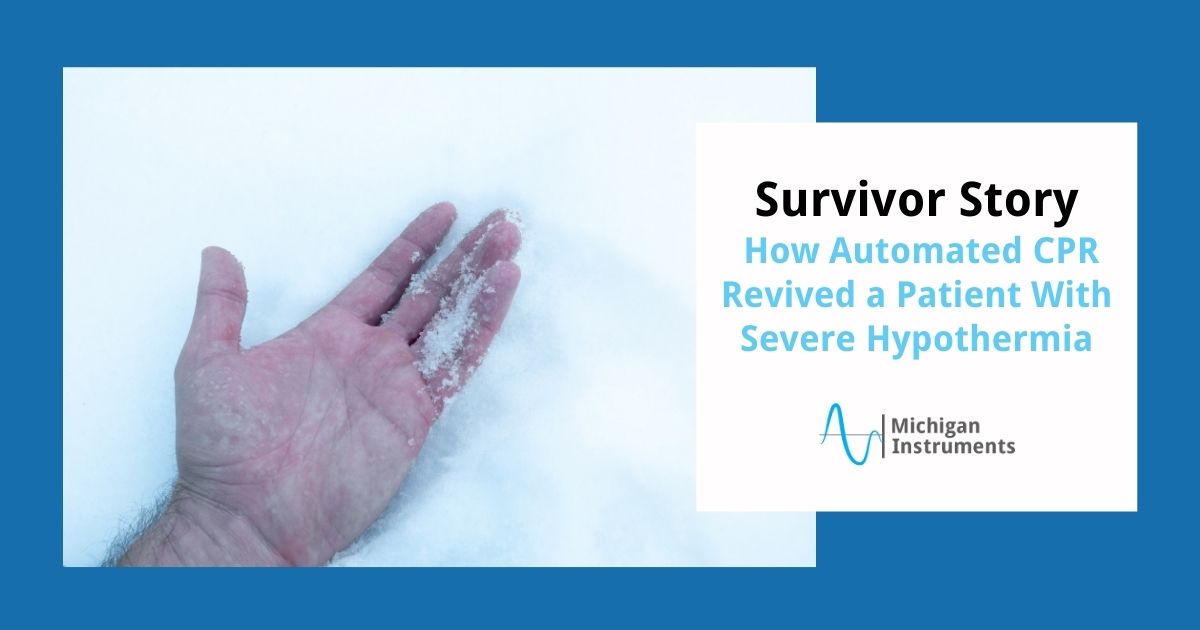
There are many reasons why the Life-Stat is the best automatic CPR device the industry has to offer. We take pride in its several unique qualities that make it suitable for adults of nearly any size and even the elderly.
Glen Davis, the Regional EMS Director at the University of Alabama, states that his department uses the Life-Stat to provide emergency services to rural areas—a true testament to its life-saving capabilities.
Practicality Without Compromising Quality
“One of the things I really like about the Life-Stat is the ventilation component that other mechanical CPR units don’t provide,” said Davis. “The performance and reliability are exceptional and performance is way above expectations. It provides high-quality CPR.”
Another convenient attribute of the Life-Stat is its flexibility. It can be used efficiently in confined spaces, including stairways. The device is lightweight—only 19.5 lbs. (8.8 kg)—making it easy for immediate use and it accommodates larger patients than other CPR devices available today.
This device is also affordable—that way, lives aren’t compromised in the name of saving money.
“The Life-Stat is really the cheapest way to add staff at a minimum per usage cost. This is very important in these tough economic times and we will look at adding more Life-Stat units as our budget allows,” said Davis.
A Device You Can Count On
Did you know that the Life-Stat provides CPR for as long as you need, so long as you have an oxygen source available?
Its electronic control module allows users to switch from 30:2 to CCV mode, with no interruption to CPR. The control module also has a pause/resume feature, allowing you to pause the device if an AED is needed.
The sustainability of this device is also one of its most remarkable features. Davis says that the device’s track record of sustainability and life-span has far exceeded his expectations.
“With most capital expenditures, you can get an average of 5 years of service,” he said. “We started using the Michigan Instruments equipment in 1978 and even though they have changed for the better over the years, the basic function has never changed.”
Additionally, the Life-Stat delivers uninterrupted CPR to patients in accordance with the latest AHA (American Heart Association) guidelines.
“If you want to give your patients, who are in cardiac arrest, the best chance to survive and return to their families and normal productive life… then seriously look at adding the Life-Stat to your emergency team.”
Our Goal? To Keep Saving Lives with Life-Stat
Michigan Instruments’ automatic CPR device has helped save lives all around the world for over 55 years. It’s our goal to keep current with the guidelines while offering an affordable, reliable CPR device providing patients with their best chance at survival.
To learn more about the benefits of the Life-Stat, visit here or contact us today.




